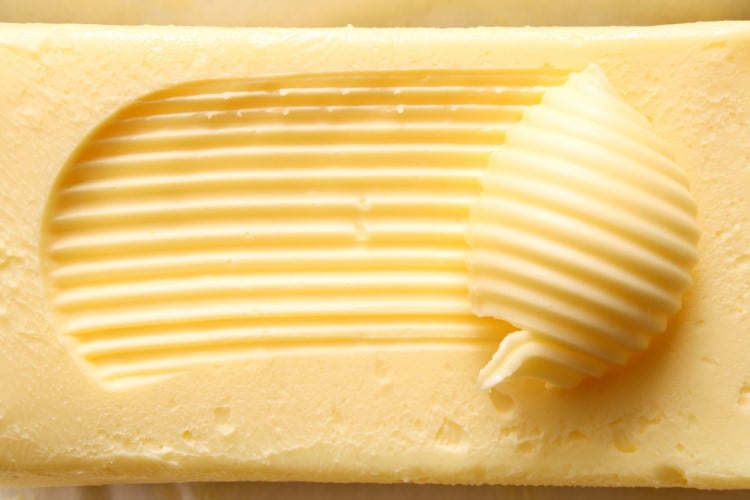France is the second biggest butter producer in the EU, having churned out 404,450 tons in 2022. The French are also among the nations that indulge in butter the most, consuming around 8kg per capita per year.
But a major investigation into the country’s dairy sector carried out by France’s competition, consumer affairs and fraud prevention authority (DGCCRF) revealed discrepancies in the composition and labeling of some butters.
The investigation was carried out in 2019 mainly in dairy farming regions including Brittany, Normandy and Pays-de-la-Loire, with the results published in late December 2023.
A mix of 129 dairy producers, manufacturers and retailers representing the entire sector were inspected, with checks carried out at street markets, bakeries, grocery stores and supermarkets among others.
DGCCRF, which enforces the rules for butter and milk fats composition and labeling, was looking for discrepancies such as high water content and low salt levels, or to identify the otherwise prohibited practice of using reconstituted ingredients to make premium butter.
In its investigation, DGCCRF found that nearly 30% of the establishments had breached various regulations.
For example, four butter samples were found to contain less salt than necessary to allow for a ‘semi-salted’ claim. While France doesn’t have mandatory requirements on salt in butter, a professional code of practice is in place, DGCCRF explained. According to the code, semi-salted butters should contain between 0.8g to 3g of salt per 100g of product, while salted butter should contain more than 3g of salt per 100g of butter.
Meanwhile, almost a sixth of the samples collected by the regulator were found to contain more water than what’s mandated by EU rules.
In the EU, butter can contain a maximum of 16% water, but this value was exceeded in 15% of the samples.
Misleading product claims, such as AOP quality signs or the words ‘farmer’ were also found to be present on products that did not have the correct certification in practice. One producer was asked to remove the ‘farmer’ label from his products after the regulator found that only 26% of the cream used came from a farm – the rest had been sourced from an external wholesaler and a dairy co-operative.
The practice of ‘re-mixing’ ingredients, such as melting excess or returned butter to create new batches of extra-fine butters, was also observed.
Some producers were also caught for mislabling their butters as containing cream when in fact whey or a mixture of cream and whey was used.
“This survey revealed that non-compliance is found among agricultural producers as well as industrialists,” DGCCRF said. “The non-compliances mainly focus on the labeling and composition of butters.”
At several farms, the investigators noted a lack of knowledge of regulations and a manufacturing process that was often poorly controlled. “This survey was an opportunity to remind farmers of their regulatory obligations by prioritizing education when there was no intention of fraud,” the body said in a statement.
As a result of the investigation, DGCCRF has issued 30 warning notices, mainly over the excessive use of water, and for labeling discrepancies. Seven ‘return to compliance’ notices were also issued, along with one criminal offence report for the destruction of seals.
French minister pledges cut to retail butter prices
According to CLAL, in 2023 the French wholesale price of butter largely recovered from the highs reached in 2022, but remained elevated compared to pre-pandemic levels.
In retail, food prices remain a concern for shoppers in 2024, though French economy and finance minister recently pledged cuts on butter, oil and meats as the government seeks to lower inflation.
The minister has also brought forward the annual negotiations held between retailers and suppliers in a bid to ease food prices; the talks are expected to conclude by January 31, 2024. According to NielsenIQ, France is among the countries where food prices had risen the most since January 2022, with food inflation reaching 17.9% between January 2022 and August 2023 – a rate higher than that of Spain (17.2%), the UK (16.4%) and Germany (15.5%) among others.

